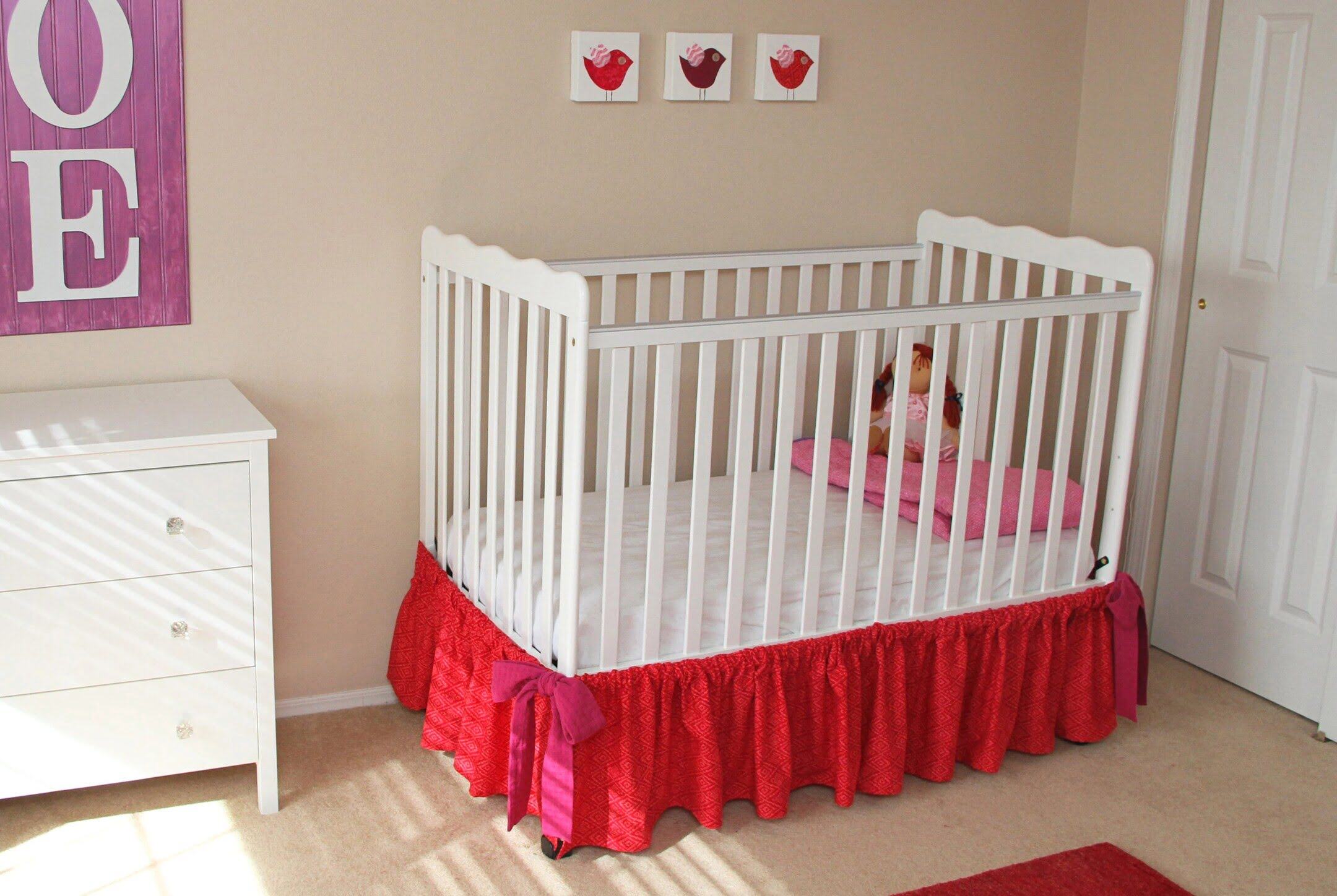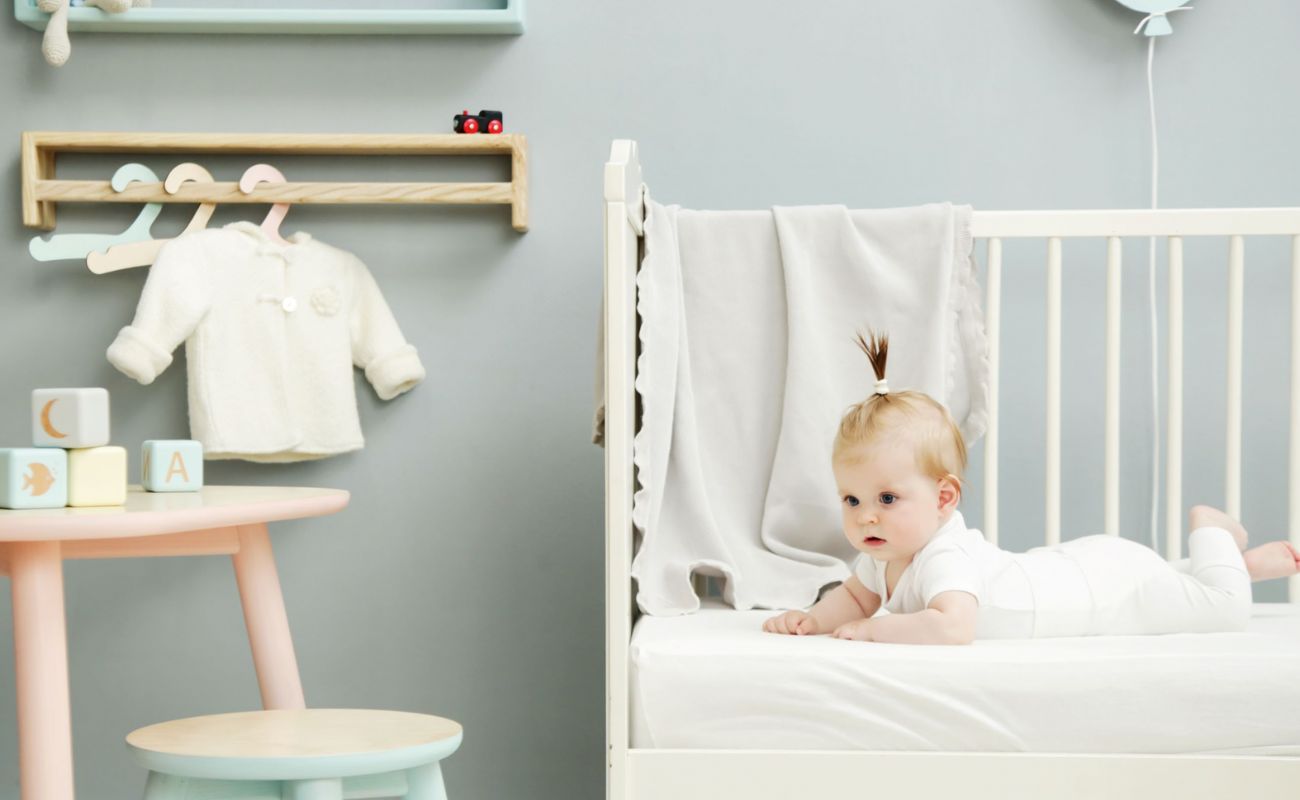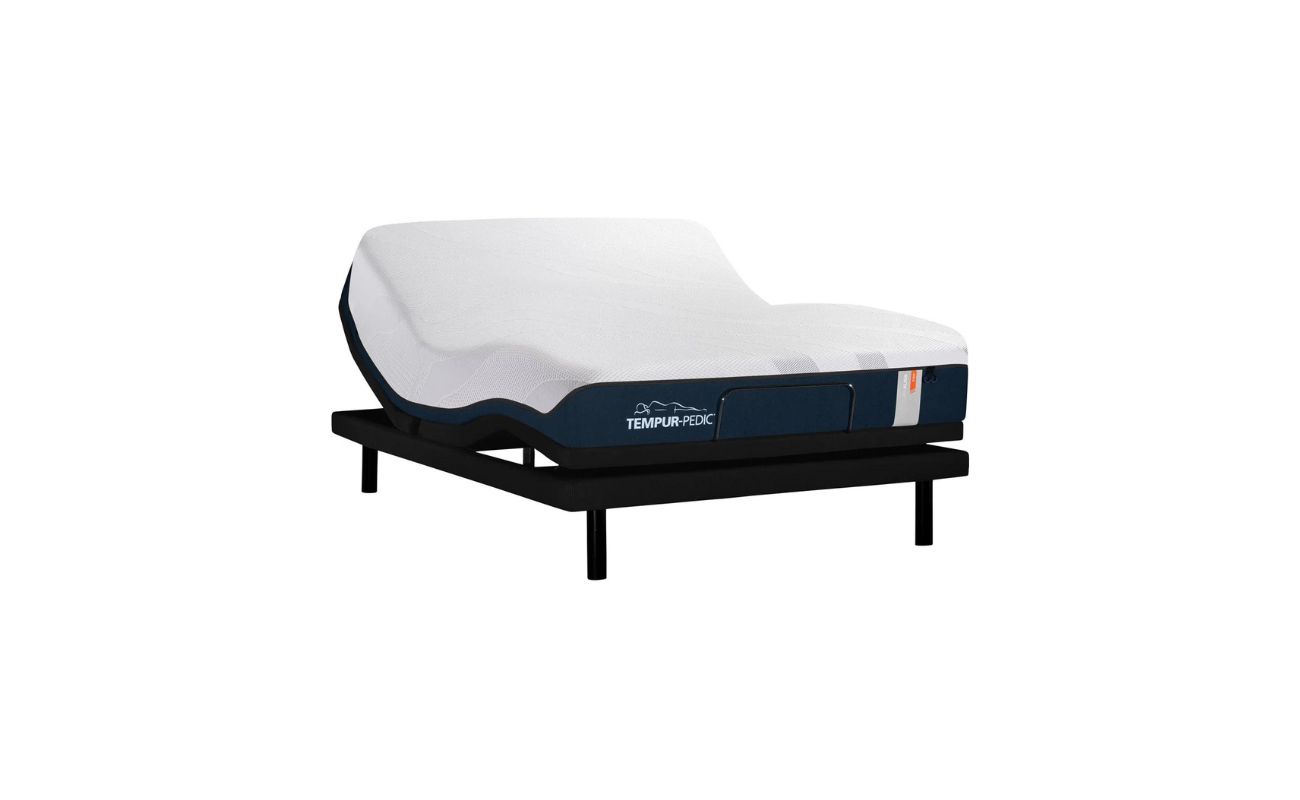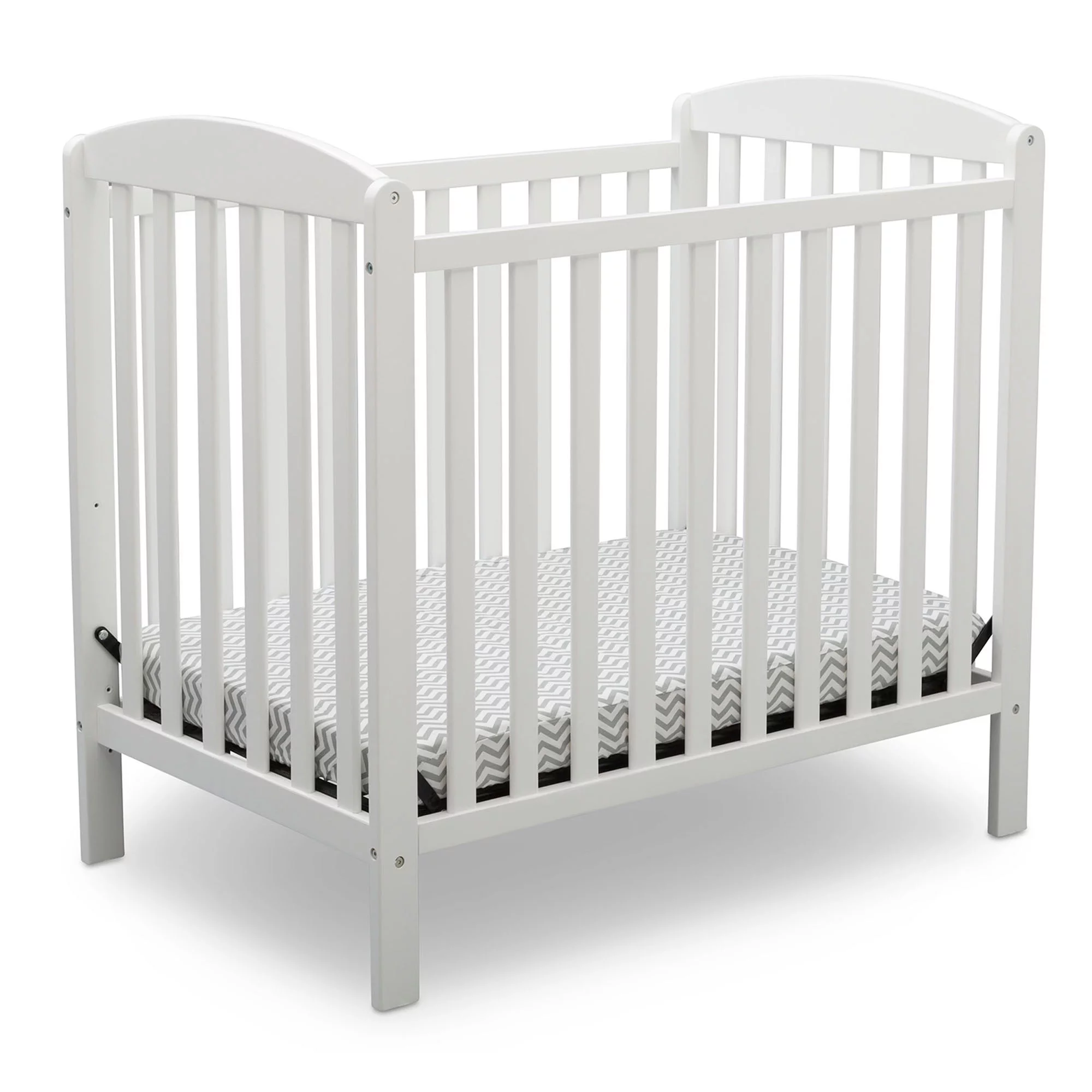Home>Furniture>Bedroom Furniture>What Kind Of Crib Mattress Is Best For A Baby
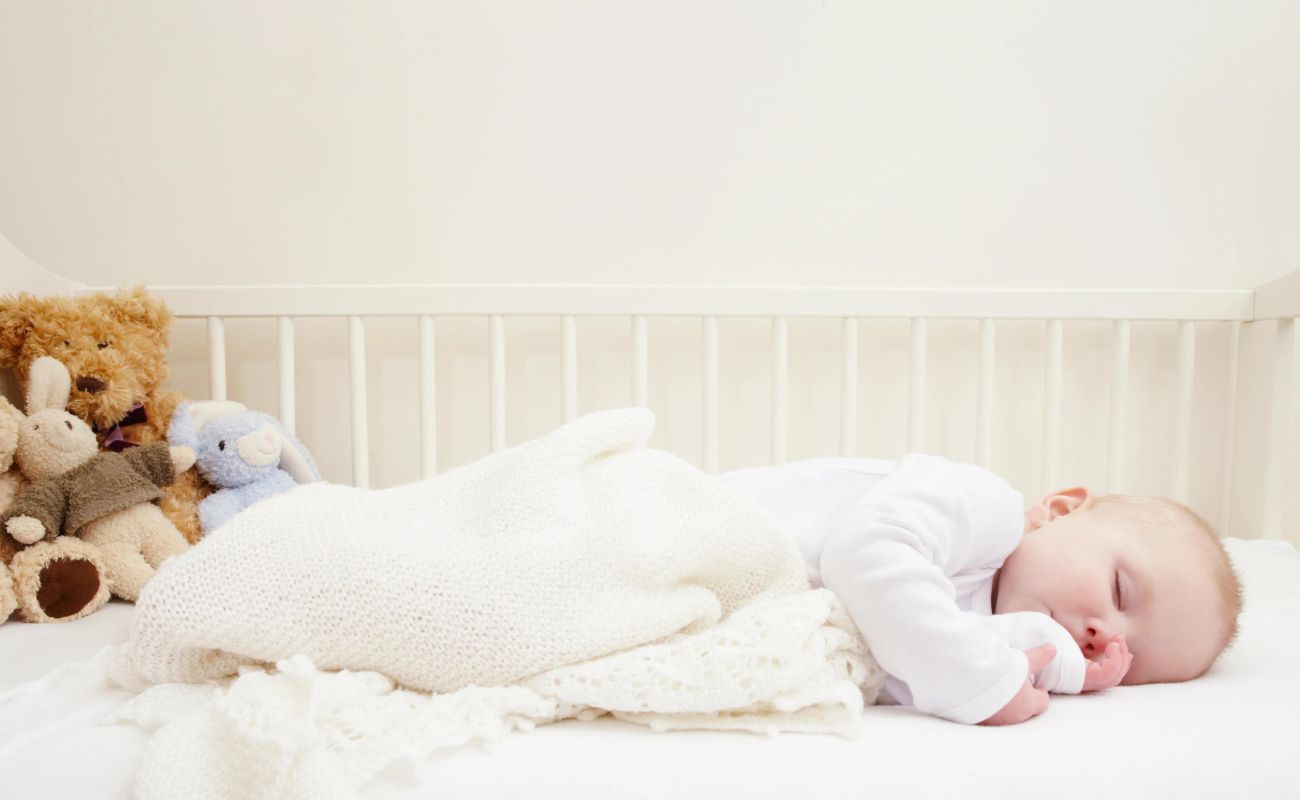

Bedroom Furniture
What Kind Of Crib Mattress Is Best For A Baby
Modified: February 25, 2024
Discover the perfect crib mattress for your baby's bedroom furniture. Find out which type of mattress is best for your little one's comfort and safety.
(Many of the links in this article redirect to a specific reviewed product. Your purchase of these products through affiliate links helps to generate commission for Storables.com, at no extra cost. Learn more)
Introduction
Welcome to the world of nursery furniture! As any new or expecting parent knows, creating a safe and comfortable space for your baby is at the top of the priority list. And when it comes to the essential items for a baby’s nursery, a crib mattress is an absolute must-have.
But with so many options available in the market, choosing the best crib mattress for your little one can be an overwhelming task. From innerspring to foam, organic to waterproof, there are various types to choose from, each with its own set of features and benefits.
In this article, we will dive deep into the world of crib mattresses, exploring the different types available and what sets them apart. We will also share some important factors to consider when selecting a crib mattress and provide safety guidelines to ensure your baby sleeps soundly and securely.
Whether you’re a first-time parent or simply looking to upgrade your baby’s sleep space, this comprehensive guide will help you make an informed decision and provide your little one with a comfortable and supportive surface for those precious moments of sleep.
So, let’s get started and explore the wonderful world of crib mattresses!
Key Takeaways:
- Choosing the right crib mattress is crucial for your baby’s safety and comfort. Consider factors like firmness, material, and waterproofing to provide a secure and supportive sleep environment.
- Innerspring, foam, organic, and waterproof crib mattresses each offer unique benefits. Prioritize safety guidelines, such as firmness and proper fit, to ensure a safe and comfortable sleep space for your little one.
Read more: How Wide Is A Crib Mattress
Understanding the Importance of a Crib Mattress
A crib mattress is not just another piece of furniture in your baby’s nursery; it plays a vital role in their safety, comfort, and overall development. Here are some key reasons why the crib mattress deserves your utmost attention:
- Safe Sleep Environment: A crib mattress provides a secure and comfortable sleeping surface for your baby. It should be firm enough to support their growing body and prevent suffocation or the risk of Sudden Infant Death Syndrome (SIDS).
- Spinal Support: Babies spend a significant amount of time sleeping, which is crucial for their physical and cognitive development. An appropriate crib mattress helps maintain proper spinal alignment, supporting healthy growth and development.
- Preventing Allergies and Respiratory Issues: Since babies have delicate respiratory systems, selecting a hypoallergenic crib mattress can help reduce the risk of allergies or respiratory conditions such as asthma. Organic or natural fiber mattresses are often recommended for their breathability and non-toxic properties.
- Longevity: Investing in a high-quality crib mattress ensures it will last through the various stages of your baby’s infancy. A durable mattress not only provides a comfortable sleeping surface but also saves you from having to replace it frequently.
- Supporting Healthy Body Temperature: Babies are not as efficient at regulating their body temperature as adults are. A crib mattress with temperature regulation features, such as moisture-wicking fabrics or breathable materials, can help keep your baby comfortable and prevent overheating.
- Promoting Sleep: Quality sleep is essential for a baby’s physical and mental development. A comfortable and supportive crib mattress promotes better sleep, allowing your little one to rest and rejuvenate properly.
Understanding the importance of a crib mattress is the first step towards choosing the right one for your baby. In the following sections, we will explore the different types of crib mattresses available, each offering unique features to cater to your baby’s specific needs.
Factors to Consider When Choosing a Crib Mattress
When it comes to selecting a crib mattress for your baby, there are several important factors to keep in mind. Taking the time to consider these factors will ensure you choose a mattress that provides optimal comfort and safety. Here are some key considerations:
- Safety Standards: Ensure that the crib mattress meets or exceeds the safety standards set by the Consumer Product Safety Commission (CPSC) and the American Society for Testing and Materials (ASTM). Look for certifications such as JPMA (Juvenile Products Manufacturers Association) to ensure the highest safety standards are met.
- Size: Check the dimensions of the crib to ensure a snug fit for the mattress. A gap between the mattress and the crib can pose safety hazards. Standard crib mattress sizes are 27 1/4 inches wide by 51 5/8 inches long, with a maximum thickness of 6 inches.
- Firmness: Opt for a firm mattress that provides proper support for your baby’s growing body. A mattress that is too soft can increase the risk of suffocation or Sudden Infant Death Syndrome (SIDS).
- Material: Consider the material composition of the mattress. Innerspring mattresses typically offer more firmness and support, while foam mattresses provide a lightweight and comfortable option. Organic or natural fiber mattresses are gaining popularity for their eco-friendly and non-toxic properties.
- Waterproofing: Babies are prone to accidents and spills, so a waterproof mattress is highly recommended. Look for mattresses with waterproof covers that are easy to clean and protect against leaks, stains, and odors.
- Breathability: A mattress with good breathability helps regulate your baby’s body temperature and prevents overheating. Look for features like airflow channels or breathable fabric covers to ensure optimal air circulation.
- Hypoallergenic Properties: If your baby has allergies or sensitive skin, consider a hypoallergenic mattress that is resistant to allergens, dust mites, and mold. Organic or natural fiber mattresses are often a great choice for their hypoallergenic properties.
- Longevity: Select a mattress that is durable and built to last. Investing in a high-quality mattress ensures it can withstand years of use through various growth stages and transitions.
By considering these factors, you can narrow down your options and make an educated decision when choosing a crib mattress for your little one. Now, let’s dive into the different types of crib mattresses available in the market.
Types of Crib Mattresses
When it comes to crib mattresses, there are several types available, each with its own unique features and benefits. Understanding the differences between these types will help you make an informed decision and select the best option for your baby’s needs. Here are the main types of crib mattresses:
- Innerspring Crib Mattresses: Innerspring mattresses are constructed with a core of steel coils, surrounded by layers of cushioning material. They offer excellent support and durability, making them a popular choice among parents. The number and gauge of the coils can vary, with more coils and a lower gauge indicating a firmer mattress.
- Foam Crib Mattresses: Foam mattresses are made from polyurethane foam and are known for their lightweight and comfortable nature. They provide good support, although they may be less firm compared to innerspring mattresses. Foam mattresses are also available in different densities, with higher density foam offering better durability and support.
- Organic Crib Mattresses: Organic mattresses are made from natural and non-toxic materials, making them an excellent choice for eco-conscious parents. They are often made with organic cotton, wool, or natural latex, which are free from harmful chemicals and allergens. Organic crib mattresses provide a safe and healthy sleep environment for your baby.
- Waterproof and Dual-Sided Crib Mattresses: Waterproof crib mattresses feature a vinyl or polyethylene cover that protects against spills and accidents. This waterproof layer helps keep the mattress clean and prevents the growth of mold or mildew. Dual-sided mattresses have one firm side for infants and a slightly softer side for toddlers, offering long-lasting usability.
Each type of crib mattress has its own advantages, so it’s important to consider your preferences and your baby’s specific needs. Take the time to research and compare the features and benefits of each type to make an informed decision.
In the next sections, we will explore these types of crib mattresses in more detail, delving into their individual features, benefits, and considerations to help you find the perfect mattress for your little one.
Innerspring Crib Mattresses
Innerspring crib mattresses are a popular choice among parents for their durability, support, and firmness. These mattresses are constructed with a core of steel coils, which are surrounded by layers of cushioning material. Here are some key features and benefits of innerspring crib mattresses:
- Support and Firmness: Innerspring mattresses offer excellent support for your baby’s growing body. The steel coils provide a firm and stable surface, ensuring proper spinal alignment and reducing the risk of suffocation or Sudden Infant Death Syndrome (SIDS).
- Durability: Innerspring mattresses are known for their long-lasting durability. The steel coils are designed to withstand years of use without losing their shape or support. This makes them a cost-effective option, as they can be used for multiple children or passed down as heirlooms.
- Weight Distribution: The coil system in an innerspring mattress helps distribute your baby’s weight evenly, reducing pressure points and promoting a more comfortable sleep experience.
- Breathability: Innerspring mattresses are known for their excellent breathability, providing optimal air circulation to help regulate your baby’s body temperature and prevent overheating during sleep.
- Edge Support: Innerspring mattresses often offer better edge support compared to other types. This feature ensures that the edges of the mattress remain firm and supportive, allowing your baby to sit or crawl near the edges without the risk of sagging.
When choosing an innerspring crib mattress, there are a few factors to consider. The number and gauge of the coils can vary, with a higher coil count and lower gauge indicating a firmer mattress. Additionally, look for mattresses with multiple layers of cushioning material, such as cotton or foam, for added comfort and support.
It’s important to note that innerspring crib mattresses can be heavier than other types, making them more difficult to maneuver or change sheets. However, their durability and supportive nature make them a popular choice among parents who prioritize a firm and long-lasting mattress for their little one.
In the next section, we will explore another type of crib mattress: foam crib mattresses. These mattresses offer their own unique set of features and benefits, making them a popular choice for many parents.
When choosing a crib mattress for your baby, look for one that is firm, waterproof, and fits snugly in the crib. This will help reduce the risk of SIDS and provide a safe and comfortable sleep surface for your little one.
Read more: How To Pick A Crib Mattress
Foam Crib Mattresses
Foam crib mattresses are a lightweight and comfortable option for your baby’s crib. These mattresses are made from polyurethane foam and offer their own set of features and benefits. Here’s what you need to know about foam crib mattresses:
- Lightweight and Easy to Maneuver: Foam mattresses are much lighter compared to innerspring mattresses. This makes them easier to lift, change sheets, and move around when needed.
- Comfortable: Foam crib mattresses provide a soft and comfortable sleeping surface for your baby. The foam contours to your baby’s body, offering gentle support and reducing the risk of pressure points.
- Varying Density Options: Foam mattresses come in different densities, ranging from low-density to high-density foam. Higher density foam mattresses are more durable and offer better support, while lower density foam mattresses may be softer and more plush.
- Affordability: Foam crib mattresses are often more affordable compared to innerspring mattresses. This makes them a budget-friendly option for parents who are looking for a comfortable and supportive mattress at a lower price point.
- Hypoallergenic and Dust Mite Resistant: Many foam crib mattresses come with a hypoallergenic cover or are treated to be resistant to allergens like dust mites. This can be beneficial for babies with allergies or sensitive skin.
When selecting a foam crib mattress, it’s important to consider the density of the foam and the overall thickness of the mattress. Higher density foam tends to be more durable and supportive, while a thicker mattress provides additional cushioning for your baby.
It’s worth noting that foam mattresses may be less firm compared to innerspring mattresses. While they still provide adequate support, it’s important to ensure that the foam mattress is firm enough for your baby’s safety, with no risk of suffocation or Sudden Infant Death Syndrome (SIDS).
Foam crib mattresses are a popular choice for parents who value lightweight and comfortable options for their baby’s crib. In the next section, we will explore another type of crib mattress: organic crib mattresses, which are gaining popularity for their eco-friendly and non-toxic properties.
Organic Crib Mattresses
Organic crib mattresses have gained popularity among eco-conscious parents who prioritize a non-toxic, sustainable sleep environment for their baby. These mattresses are made from natural and organic materials, offering a range of benefits. Here’s what you need to know about organic crib mattresses:
- Non-Toxic Materials: Organic crib mattresses are made with natural and non-toxic materials, such as organic cotton, wool, or natural latex. These materials are free from harmful chemicals, flame retardants, and pesticides, ensuring a safe sleeping surface for your baby.
- Eco-Friendly: Organic mattresses are a sustainable choice, as they are made from renewable resources and produced using environmentally-friendly practices. They reduce the carbon footprint and contribute to a healthier planet for future generations.
- Hypoallergenic: Organic materials are often hypoallergenic, which is beneficial for babies with allergies or sensitive skin. They resist the growth of allergens, dust mites, and mold, promoting a cleaner and healthier sleep environment.
- Regulates Temperature: Organic fibers, such as organic cotton or wool, have natural temperature-regulating properties. They help keep your baby cool in the summer and warm in the winter, ensuring optimal comfort throughout the year.
- Long-Lasting: Organic crib mattresses are known for their durability and longevity. They are made with high-quality materials that are designed to withstand years of use without compromising on comfort or support.
When selecting an organic crib mattress, ensure that it is certified by reputable organizations, such as GOTS (Global Organic Textile Standard) or GOLS (Global Organic Latex Standard). These certifications guarantee that the mattress meets strict organic standards and is made with certified organic materials.
While organic crib mattresses tend to be more expensive compared to other types, many parents find the peace of mind and benefits associated with organic materials to be worth the investment.
Now that you’re familiar with organic crib mattresses, let’s move on to exploring another type of crib mattress: waterproof and dual-sided crib mattresses.
Waterproof and Dual-Sided Crib Mattresses
Waterproof and dual-sided crib mattresses offer added functionality and convenience for parents. These mattresses come with unique features that cater to the specific needs of babies and toddlers. Let’s take a closer look at what sets them apart:
- Waterproof Protection: Waterproof crib mattresses are designed with a vinyl or polyethylene cover that acts as a barrier against spills, accidents, and liquids. This waterproof layer helps protect the mattress from stains, odors, and the growth of mold or mildew, making it easy to clean and maintain.
- Dual-Sided Design: Dual-sided crib mattresses are specifically designed for infants and toddlers. One side of the mattress is usually firmer to provide optimal support for infants, while the other side is slightly softer and more cushioned for the comfort and needs of toddlers. This dual-sided feature allows you to extend the lifespan of the mattress as your baby grows.
- Easy Maintenance: With a waterproof cover, cleaning and maintaining a waterproof crib mattress is a breeze. Simply wipe away spills or accidents with a damp cloth, ensuring a hygienic and fresh sleeping surface for your baby.
- Peace of Mind: Waterproof and dual-sided crib mattresses provide peace of mind for parents, knowing that their baby’s mattress is protected against leaks and accidents. This can help alleviate stress and allow for a more restful sleep for both baby and parent.
When selecting a waterproof or dual-sided crib mattress, it’s still important to consider other factors such as safety, firmness, and materials. Ensure that the mattress meets safety standards, provides adequate support, and is made with quality materials that are hypoallergenic and free from harmful chemicals.
These types of crib mattresses offer practicality and versatility, making them a popular choice among parents who value convenience and long-lasting functionality. With the waterproof feature, you can confidently handle those inevitable spills and accidents, while the dual-sided design allows your mattress to adapt as your baby grows.
Now that we’ve covered the different types of crib mattresses available, it’s important to keep in mind the safety guidelines to ensure your baby’s sleep environment is secure. Let’s explore the safety guidelines for crib mattresses in the next section.
Safety Guidelines for Crib Mattresses
Ensuring a safe sleep environment for your baby is of utmost importance. To promote a secure and comfortable sleep space, it is crucial to follow these safety guidelines when selecting and using a crib mattress:
- Firmness: Choose a firm mattress that provides proper support for your baby. A firm mattress reduces the risk of suffocation and ensures optimal spinal alignment.
- Size: The mattress should fit snugly inside the crib, leaving no gaps between the mattress and the crib walls. Any gaps can pose an entrapment hazard for your baby.
- No Loose or Soft Bedding: Avoid using loose or soft bedding items, such as pillows, blankets, or stuffed animals, in the crib. These items can increase the risk of suffocation or Sudden Infant Death Syndrome (SIDS).
- Waterproof Cover: Consider a waterproof mattress cover that protects against spills, accidents, and liquids. A waterproof cover helps keep the mattress clean and prevents the growth of mold or mildew.
- Proper Fit: Ensure that the mattress cover or sheet fits tightly around the mattress. Loose or ill-fitting covers can pose a suffocation risk for your baby.
- No Gaps or Sags: Regularly inspect the mattress for any signs of wear or damage, such as sagging or ripped seams. Replace the mattress if it shows signs of deterioration to maintain a safe sleep surface.
- Follow Manufacturer’s Guidelines: Always follow the manufacturer’s guidelines for your specific crib mattress. This includes information on weight limits, suitable ages, and cleaning instructions.
It is also important to regularly check the crib mattress for any recalls or safety alerts. Staying informed about any issues or potential hazards ensures that your baby’s sleep environment remains safe and secure.
By adhering to these safety guidelines, you can provide your baby with a secure and comfortable sleep space. Now, let’s wrap up this comprehensive guide to crib mattresses.
Read more: How To Raise A Crib Mattress
Conclusion
In conclusion, selecting the right crib mattress for your baby is an important decision that can greatly impact their safety, comfort, and overall sleep experience. Taking the time to understand the different types of crib mattresses and considering factors such as safety, firmness, materials, and additional features will help you make an informed choice.
Innerspring crib mattresses are known for their durability and firm support, while foam crib mattresses offer lightweight comfort and varying density options. Organic crib mattresses provide an eco-friendly and non-toxic sleep environment, and waterproof and dual-sided crib mattresses offer added functionality and convenience.
Remember to follow safety guidelines, including choosing a firm mattress, ensuring a snug fit in the crib, and avoiding loose bedding. Regularly inspect the mattress for any signs of wear and tear and follow the manufacturer’s guidelines for usage and maintenance.
By prioritizing your baby’s safety, comfort, and overall well-being, you can provide them with a quality sleep environment that promotes healthy growth and development.
We hope this comprehensive guide has provided you with the information you need to confidently choose the best crib mattress for your little one. As you embark on this exciting journey of parenthood, may your baby enjoy many restful nights of sleep on their comfortable and supportive crib mattress.
Happy crib mattress shopping!
Frequently Asked Questions about What Kind Of Crib Mattress Is Best For A Baby
Was this page helpful?
At Storables.com, we guarantee accurate and reliable information. Our content, validated by Expert Board Contributors, is crafted following stringent Editorial Policies. We're committed to providing you with well-researched, expert-backed insights for all your informational needs.
